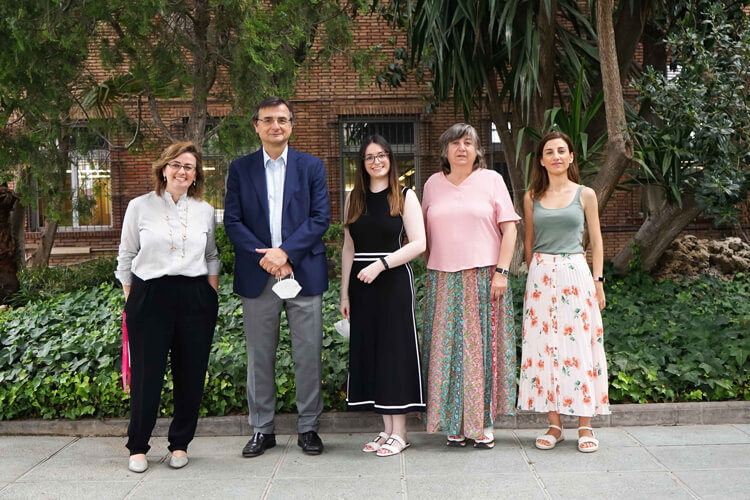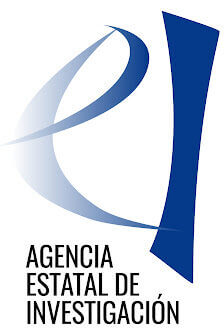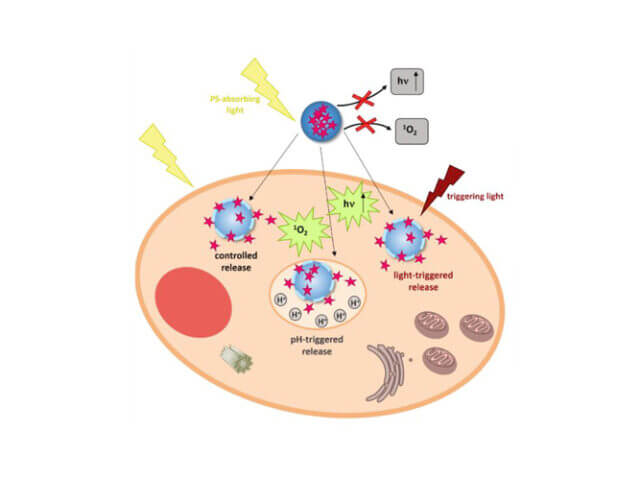Photosensitive Targeted Nanocarriers for Selective Delivery of Photodynamic Therapy

Photodynamic therapy (PDT) is an alternative to chemotherapy or radiotherapy for cancer therapies. The O2 + light + photosensitizer combination is very effective in these treatments, with high selectivity across time and space.
In any cancer therapy, one of the greatest difficulties involves precisely controlling the placement of the drug in the tumour tissue without affecting healthy tissue. As such, the targeting of photosensitizing agents to deliver drugs selectively to tumour cells stands out among aspects that can be improved in the safety of PDT. The delivery of drugs by means of nanocarriers makes it possible to actively target them towards tumour cells thanks to the functionalization of the surface of the nanosystem with ligands aimed at recognizing and binding to cell surface receptors that are overexpressed in these cells.
Within this context, Dr Elena de las Heras recently defended her doctoral thesis, entitled Photosensitive Targeted Nanocarriers for Selective Delivery of Photodynamic Therapy, which was supervised by IQS School of Engineering professors Dr Monserrat Agut and Dr Santi Nonell.1,2
Photosensitive Targeted Nanocarriers for Selective Delivery of Photodynamic Therapy
In her thesis, Dr de las Heras employed different strategies, for which she used two types of nanocarriers for the delivery of drugs in cancer treatments: poly-(D,L-lactide-co-glycolide) nanoparticles (PLGAs) and mesoporous silica nanoparticles (MSNPs). In addition, she explored two types of targeted ligands: the c(RGDfK) peptide and the Cetuximab antibody. As photosensitizers, she used zinc and silicon phthalocyanines.
Polyethylene glycol (PEG)-coated PLGA nanoparticles, developed with the photosensitizer ZnTriMPyP covalently attached to their surface, have been shown to be valuable nanosystems for photodynamic therapy. However, endowed with the peptide c(RGDfK) and despite improving the photodynamic activity against the tumour cells to which they are targeted, damage to other cells was not prevented, which limits the selectivity of this targeting strategy.
On the other hand, the design of photo-immuno-nanocarriers was explored, in which mesoporous silica nanoparticles, coated with PEG, loaded with phthalocyanines, and functionalized with Cetuximab, have been synthesized, proving effective and selective against AsPC-1 pancreatic cancer tumour cells.
Finally, photo-immuno-chemo-nanocarriers were developed, loading the above nanoparticles with the antitumour agent doxorubicin, which is released in tumour cells by light action, constituting an effective and safe nanodevice for the targeted administration of doxorubicin.
This doctoral thesis received funding from the Spanish Ministry of Economy and Competitiveness under the project CTQ2016-78454-C2-1-R.
[i] de las Heras, E.; Boix-Garriga, E.; Bryden, F.; Agut, M.; Mora, M.; Sagristá, M. L.; Boyle, R. W.; Lange, N.; Nonell, S. C(RGDfK)- and ZnTriMPyP-Bound Polymeric Nanocarriers for Tumor-Targeted Photodynamic Therapy. Photochem. Photobiol. 2020, 96 (3), 570–580. (https://doi.org/10.1111/php.13238)
[ii] Revuelta‐Maza, M.Á.; de las Heras, E.; Agut, M.; Nonell, S.; Torres, T.; de la Torre, G. Self‐Assembled Binaphthyl‐Bridged Amphiphilic AABB Phthalocyanines: Nanostructures for Efficient Antimicrobial Photodynamic Therapy. Chemistry. 2021, 27 (15), 4955–4963. (https://doi.org/10.1002/chem.202005060
RELATED PEOPLE:
Santi Nonell Marrugat, PhD
RESEARCH GROUP
Applied Photobiological Chemistry
Chemical Reactions for Innovative Solutions
RELATED PROJECTS
PhotoSMS (Terapia fotodinámica en cancer)




